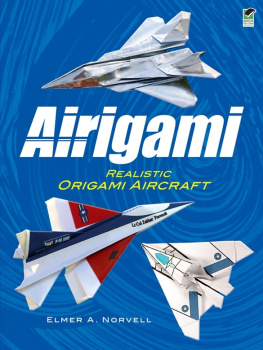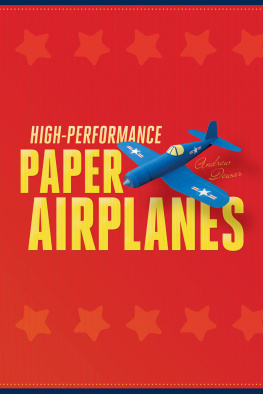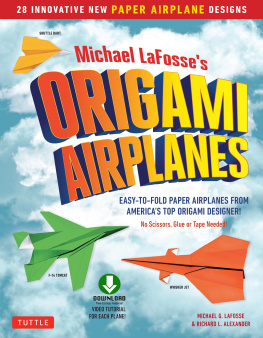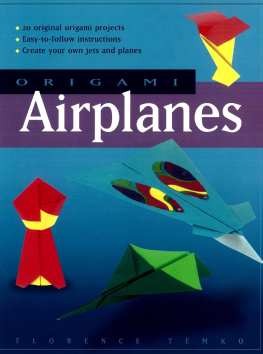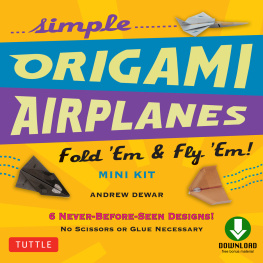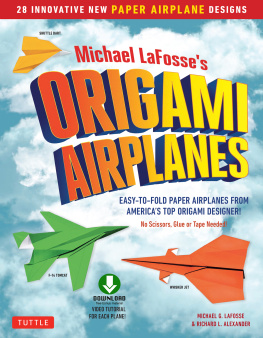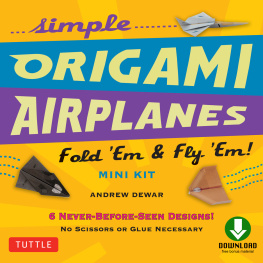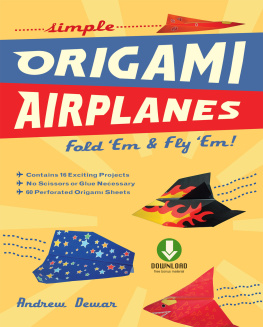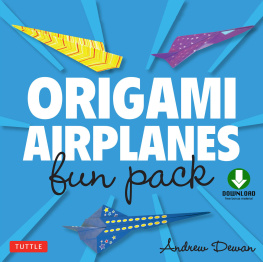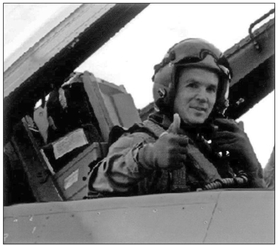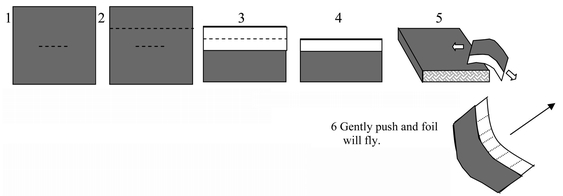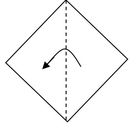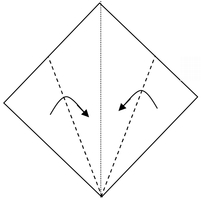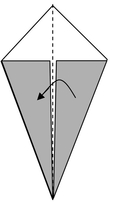Elmer A. Norvell is a Professional Engineer with over 24 years service in the US Military. He is a private pilot and ultra-light aircraft test pilot. His hobbies include mathematics, scuba diving, and running 100-mile marathons (with a best time of less than 21 hours!).
He lives in Pike Road, Alabama with his wife, also a marathoner and his son, who is an Eagle Scout and a drummer.
Further Study/Bibliography
Tern Boun, Awesome Origami Aircraft Models of the Worlds Best Fighters , Victoria, BC, Trafford Publishing, 2005.
Excellent aircraft (non-flying). Should be made of foil or foil back paper. Unusual paper dimensions (3:1, 3.5:1) long and thin.
Peter Engel, Folding the Universe: Origami from Angelfish to Zen , New York, Vintage Books, 1989.
Unusual study into creativity, chaos theory, and patterns. Although there are no aircraft, the animals are great. Complex designs and square sheets only.
Robert J. Lang, Origami Design Secrets , Natick, MA, A K Peters, Ltd., 2003.
Remarkable in-depth mathematical study on creating origami designs. Squares only, no aircraft.
John Montroll, Origami for the Enthusiast , New York, Dover Publications, 1988.
Outstanding folder and design technique, however, only animals no aircraft. Squares only.
Thay Yang, Exotic Paper Airplanes (1998) and Exquisite Interceptors (2000), Fort Bragg, CA, Cypress House.
Excellent books on concept aircraft. All designs are 8.5 inches by 11 inches.
For addition information on the aircraft and their history:
David Donald, The Complete Encyclopedia of World Aircraft, New York, Barnes and Noble, Orbis Publishing Ltd.,1997.
Jay Miller, The X-Planes: X-1 to X-45, Midland Publishing, Hinckley, England, 2001.
Jim Winchester, X-Planes and Prototypes , New York, Barnes and Noble, Amber Books, Ltd, 2005.
Flight Principles
Flight Worthiness of Paper Models - Gravity, Thrust, Lift, and Drag
Gravity and Thrust
Gravity and Thrust are mostly fixed. To change gravity significantly you must get out of Earths gravity by going out in space or living on a different planet. Currently there are not many options. Thrust is limited by the strength and technique of whoever is flying the model. There is some difference in experienced paper airplane pilots, however mostly this is a matter of practice and trial and error. Launching aircraft at the correct attitude and when outside launching into the wind may improve the flight duration and performance.
Lift
Most efficient lifting bodies tend to be slow and have a lot of inherent drag.
The lifting foil is a good example of a duration-type paper plane.
Flying Foil start with any square on Step 5 bend around the sharp corner of a desk to make dihedral curve (for stability).
6 Gently push and foil will fly.
The foil is effective because it maximizes wing area by eliminating the fuselage and other control surfaces and projections. There are not many scale examples of these. Good sources of these type full-scale aircraft are the X- Planes programs. The X-20 Dyna-Soar and the X-23 Prime, X-24 (A,B and C), X-30 A, X-33, X-38 and the X-45A UCAV are all good examples of lifting body designs. These aircraft are much more difficult to trim and control than dart-type conventional jets. They are not as aesthetically appealing nor as well known as conventional aircraft. The lifting body design is important and has led to the development of the reusable space shuttle.
Dart-type jets do not rely on lift as much as they do thrust. Designs include F-16, F16-XL, XB-70 Valkyrie, X-29, and SAAB Gripen which are likely the best flyers in this book. They are fast and can fly long distances. They have relatively low drag and slightly less wing area. They are a good combination of speed and duration.
Drag
Drag is undesirable and inhibits flight speed and duration for paper airplanes. More projections such as the XB-70 Valkyrie (page 35) compared to the F-16XL (page 25) equates to more drag on the XB-70. However, larger wing area to weight ratios cause increased drag and reduces overall speed.
(see How to Trim/Airplane Terms page 111 for additional information)
Concorde
The Concorde was the first and only commercial jet to cruise at speeds faster than the speed of sound. This Mach 2 plus aircraft was the product of cooperation between the Sud-Aviation of France and the British Aircraft Corporation (BAC). This SST (Super-Sonic Transport) began operation in 1976 and flew up to 144 passengers each flight until it was taken out of service 25 years later.
Start with 5x 5 (square) colored/printed side down
1. Fold in half on diagonal. Unfold.
2. Fold raw edges to center on both sides.
3. This creates a kite base. (Guess why it is called a kite-base.) Fold in half. Leave folded.
4. Valley fold Front and Back.
5. Valley fold wing. Repeat on reverse side. Turn to the right.
6. Reverse fold rudder by pulling it through the fuselage. The pivot point is at the apex of the hidden paper (point A).

